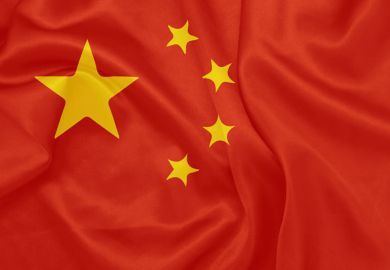Asia’s first group of leading universities hopes to accelerate the rise of the continent within the world of higher education.
The Asian Universities Alliance, which is chaired by Tsinghua University, aims to promote the mobility of students, scholars and staff; strengthen research collaboration and joint innovation; organise events to discuss higher education strategies and policies; and compile and publish annual reports on the state of Asian higher education.
The group has 15 founding members from across the continent, including the National University of Singapore (NUS), Peking University, Hong Kong University of Science and Technology (HKUST), the Indian Institute of Technology Bombay, Seoul National University, the University of Tokyo and the University of Malaya.
Tan Eng Chye, deputy president (academic affairs) and provost at NUS, which is the continent’s leading university in the latest Times Higher Education World University Rankings at 24th place, said that it was important for Asia to establish its own university alliance because its “educational needs are different from the West” and it has “many economies at various stages” of development.
“The alliance is a timely one [when] Asia is on the rise and we need to build upon the momentum,” he said.
“Higher education will play an increasingly important role in future Asian economies, and there are rising expectations for our universities to contribute more to enhancing national growth and competitiveness, promote entrepreneurship and innovation, and address major societal challenges.”
Tony Chan, HKUST president, said: “Asian universities are going to play an increasingly important role in future Asian society…It is important for leading Asian universities to have our share of voice and presences in the international arena.”
Devang Khakhar, director of IIT Bombay, said that while the university has “built strong linkages with universities in the US, Europe and Australia”, it does not yet have close relationships with institutions within Asia.
“We saw our membership of AUA as a way of building relationships with some of the top universities in Asia,” he said.
Simon Marginson, director of the Centre for Global Higher Education at the UCL Institute of Education, said that the alliance was “a very important initiative in the higher education world”.
“Arguably, these are the leading or most dynamic universities in each country or system,” he said.
“A lot now depends on what becomes the main active agenda of the AUA, and of course how much priority its members give to it, within their larger set of networked relationships.”
However, Philip Altbach, founding director of the Center for International Higher Education at Boston College, was sceptical about the impact of such a group.
“It is not clear to me if the plethora of university alliances – in some cases more like self-selected clubs of elites – do much good,” he said.
“So I don't know if an Asian alliance would be useful from the viewpoint of increasing their international standing. What could be useful, however, is an informal place for universities to discuss common problems and challenges.”
Register to continue
Why register?
- Registration is free and only takes a moment
- Once registered, you can read 3 articles a month
- Sign up for our newsletter
Subscribe
Or subscribe for unlimited access to:
- Unlimited access to news, views, insights & reviews
- Digital editions
- Digital access to THE’s university and college rankings analysis
Already registered or a current subscriber?











